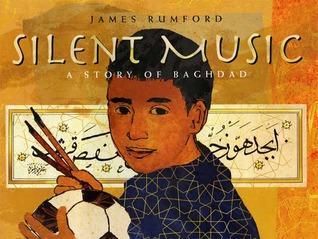
Silent Music
Read Aloud Book: Silent Music
Story: James Rumford
Illustration: James Rumford
ISBN-13: 978-1596432765
C3 Framework Key term: Investment in human capital: Efforts to acquire or increase human capital including education, training, and practice
Synopsis
Ali loves calligraphy. He spends a lot of time practicing his writing and focusing on the hardest words. His mother calls him Yakut because he copes with the bombing of the city by dedicating himself to the practice of calligraphy. In the 13th century, Baghdad was under Mongolian attack. Yaqut al-Musta’simi hid in a minaret within one of the Baghdad mosques. The calligrapher secluded himself from the traumatic devastation the city and focused on his pen, ink, and paper. Yakut’s inventive work influenced Persian and Ottoman calligraphers in subsequent centuries.
Note: A teacher resource on Calligraphy in Islamic Art is available on the website of the Victoria and Albert Museum. A resource on the 2003 war in Iraq is available on the History Channel website.
Discussion
Say: Calligraphy comes from the Greek word for “beautiful writing.” Calligraphy started early in the Islamic era. It was a “democratic” form of art because Arabs who could read and write, regardless of their wealth or social status, could practice calligraphy. Despite the fact that it crossed all socioeconomic groups, people regarded calligraphy as the noblest of occupations, because it integrated religious texts and the symmetrical and decorative beauty of the Arab font. One of the well-known types of calligraphy, a cursive script known as Nashki, was used by scribes to copy sections of the Quran on papyrus. Later in the middle ages, the artistic effects of calligraphy were supplemented by illustration and the way in which books were bound.
Ethics Connection
Introduce today’s ethical topic: The equality of all people is a foundational concept in ethics, and it is closely related to the virtues of caring, compassion, and social responsibility. Say: Islamic scholars innovated legal thinking about human rights. Some of the terms they discussed were human dignity and equality before the law. Calligraphy is one of the multiple paths of scholarship that enabled individuals to improve their economic status. Public access to books was another. The first publication industry was in the Muslim civilization in the 8th century. Almost every Mosque or a learning institution in middle ages Muslim communities included public book collections. Baghdad (before the Mongols’ attack) had 36 public libraries and over 100 book-dealers. The collections included volumes that captured the state-of-art knowledge in religion, science, Greek philosophy, and languages. Write on the board: Education as a Gateway to Equality. Say: In groups, create a short presentation about the relationship between knowledge and learning and equal access to one of the following: legal rights, jobs, housing, healthcare, and democracy.
Challenge Activity
Invite students to comment on the morality of using the concept of group affiliation to advocate for equality. For example, the notion that all members of the Islamic communities are equal does not include members of other religious communities. To what extent does such notion serve local interests and ignores global and long-term interests?
Fun Activity
Say: Go to Stanford University’s Arabic Alphabet Chart. Click on each letter and watch a short video demonstrating how it is written. Practice writing some of the letters.